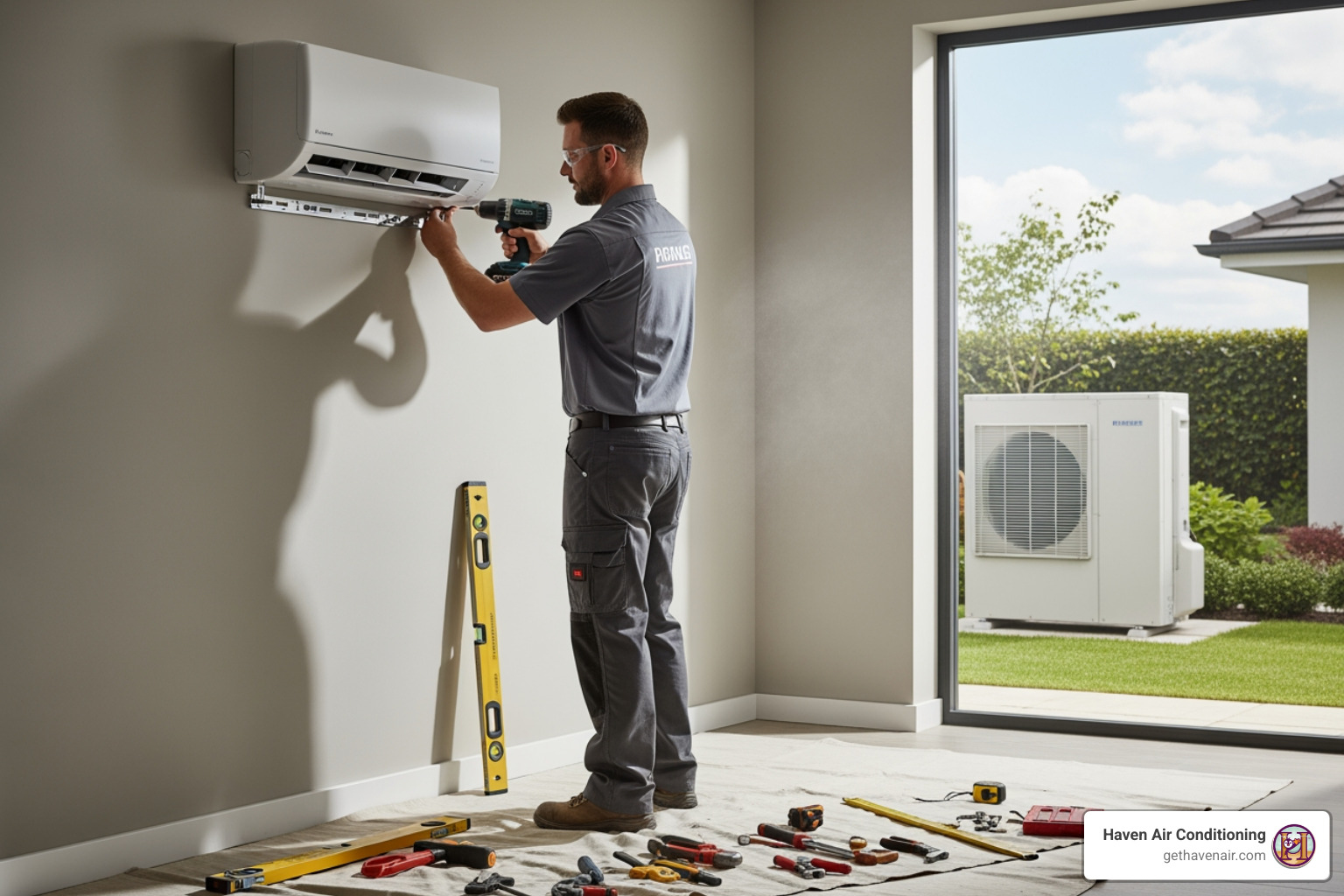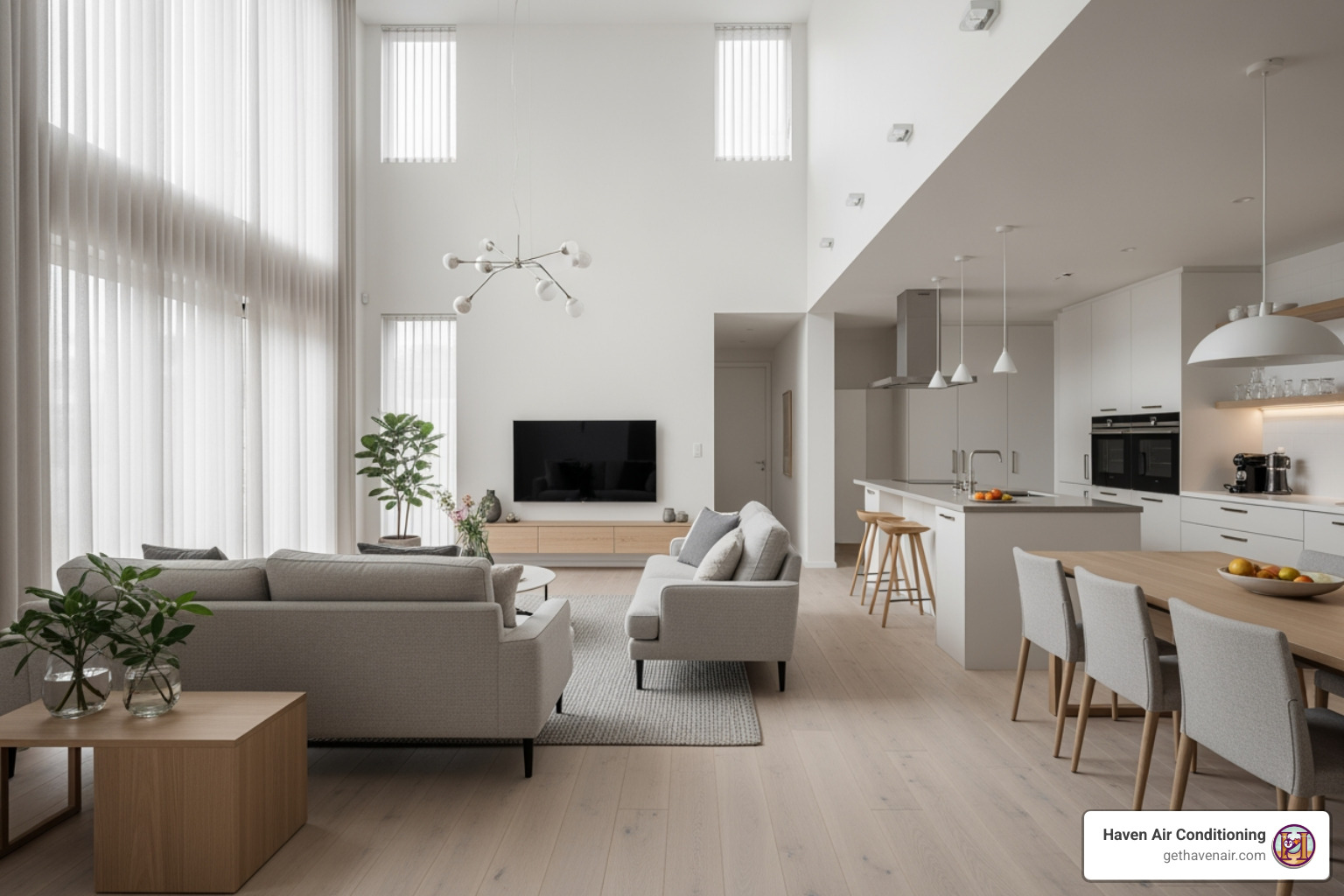Understanding Air Change Rate Per Hour
The air change rate per hour is a crucial metric that measures how many times the air in a room or space gets replaced with fresh outdoor air within one hour. This calculation is essential for maintaining high indoor air quality and ensuring that occupants are breathing clean, healthy air.
Why Calculating Air Change Rate Per Hour Is Important
Calculating the air change rate per hour is important for several reasons. Firstly, it ensures that occupants are consistently supplied with fresh outdoor air to breathe, especially in spaces where people spend extended periods of time like homes, offices, schools, and healthcare facilities.
Secondly, knowing the air change rate per hour helps you evaluate whether your ventilation system meets engineering guidelines and building codes. These standards consider factors like occupancy levels and pollutant sources to ensure optimal indoor air quality.
Lastly, understanding this concept allows you to identify potential issues with your ventilation system. If the calculated value falls below the recommended levels, it may indicate inadequate airflow or equipment malfunction. Conversely, if the value exceeds optimal ranges significantly, it could suggest excessive energy consumption due to overventilation.
The Role Of Air Change Rate Per Hour In Maintaining Indoor Air Quality
Maintaining good indoor air quality (IAQ) is crucial for promoting health and well-being among occupants. The proper exchange of indoor and outdoor air plays a significant role in achieving this goal.
- You can ensure a regular supply of fresh outdoor air.
- Pollutants generated indoors can be effectively diluted.
- The risk of airborne contaminants can be minimized.
- Comfort levels can be improved by reducing stuffiness or odors caused by stagnant air.
Factors Influencing Air Change Rate Per Hour
Understanding the factors that influence air change rate per hour is essential for maintaining high-quality indoor air. Several key elements come into play when determining how often fresh air replaces stale air within a space. Let’s explore these factors and their impact on air change rates.
- Building Design and Ventilation Systems: The design of a building, including its layout, size, and construction materials, plays a significant role in determining the number of times per hour that the volume of air in a space is replaced with fresh outdoor air. Buildings with open floor plans or high ceilings tend to have increased airflow compared to those with smaller rooms or low ceilings.
Additionally, ventilation systems are designed to facilitate proper airflow by introducing fresh outdoor air while removing stale indoor air. The type and efficiency of these systems greatly affect the overall exchange of indoor and outdoor air. It is important to ensure that your building has proper ventilation equipment in place to maintain healthy indoor environments. - Outdoor Weather Conditions: Outdoor weather conditions also impact how many times per hour outdoor air enters a space and replaces indoor air. For example, during windy days or periods of high atmospheric pressure differences between indoors and outdoors, there tends to be an increase in natural ventilation occurring through cracks around windows and doors.
Conversely, during calm weather conditions or when buildings are tightly sealed for energy efficiency purposes, fewer exchanges occur naturally between inside and outside airs. In such cases, mechanical ventilation systems become even more important for achieving sufficient levels of fresh-air replacement. - Room Occupancy: The number of occupants within a room directly affects the amount of carbon dioxide (CO2) being produced through respiration—a key indicator used to determine if adequate ventilation is present in an enclosed space.
- Ventilation Rates Required by Engineering Standards: Engineering standards provide guidelines for minimum recommended supply rates based on various factors such as occupancy type, activity level, and pollutant sources. Adhering to these standards ensures that each cubic foot gets enough new clean outside air removed from your home every given time period expressed as changes per hour, which will ultimately contribute to healthier indoor environments for occupants.
- Building Envelope: The structure’s envelope controls airflow significantly; properly sealed windows prevent excessive infiltration while poorly insulated envelopes may lead to increased energy consumption and compromised indoor air quality due to less frequent air changes per hour.
How To Calculate Air Change Rate Per Hour
Determining the air change rate per hour is essential for maintaining high-quality indoor air. By understanding how many times the air in a room or space is replaced within an hour, you can ensure that your ventilation system is providing fresh and clean air effectively. Here’s a step-by-step guide to help you calculate the air change rate per hour.
- Measure the Space: Start by measuring the volume of the room or space where you want to calculate the air change rate. Simply multiply its length, width, and height.
- Determine Air Changes: Next, decide how many times you want to exchange all of the air in that space within an hour based on factors like occupancy levels and specific requirements for different types of spaces.
- Calculate Total Airflow: Multiply the volume by the number of changes needed to determine the total airflow required for achieving the desired air changes per hour.
- Consider Efficiency Factors: Take into account efficiency factors such as ductwork resistance or obstructions that may affect airflow distribution throughout your space when calculating airflow requirements.
- Select Ventilation System: Choose a ventilation system that can deliver enough fresh outdoor air into your space while maintaining proper pressure balance based on your calculated total airflow requirement considering efficiency factors.
- Consult Engineering Standards: When selecting a ventilation system and designing its layout, refer to engineering standards like ASHRAE guidelines for recommended minimum rates based on occupancy type and purpose.
- Measure Actual Air Change Rate Per Hour: After installing your chosen ventilation system, measure actual airflow using appropriate instruments and compare it with your calculated requirements to verify if it meets your desired air change rate per hour.
By following these steps, you can accurately calculate the air change rate per hour for any given space. Remember that precise measurements and adherence to engineering standards are crucial in ensuring optimal indoor air quality and a healthy environment for occupants.
Interpreting Your Air Change Rate Per Hour Results
Knowing how to interpret the results of your air change rate per hour calculation is crucial for ensuring the quality of your indoor air. By understanding these results, you can determine whether your current ventilation system is effectively providing a sufficient amount of fresh air exchange.
- Determining if Your Air Change Rate Per Hour Is Within the Recommended Range:
– Check industry standards: Engineering and building codes often provide guidelines for minimum recommended air change rates per hour based on factors such as occupancy type, room size, and intended use.
– Consider specific needs: Certain environments may require higher or lower air change rates depending on their purpose. For example, healthcare facilities typically have stricter requirements due to infection control measures.
– Evaluate comfort levels: If occupants frequently complain about stuffiness or odors in a space, it could indicate that the current air change rate per hour is inadequate. - What to Do If Your Air Change Rate Per Hour Is Too High or Too Low:
– High air change rate: If your calculations reveal an excessively high value for the number of changes per hour, it might be necessary to adjust or optimize your ventilation system. This could involve reducing fan speeds or adjusting damper settings to achieve a more balanced airflow.
– Low air change rate: In cases where the calculated value falls below recommended levels, steps should be taken to increase ventilation. This can include adding additional supply vents or exhaust fans strategically placed throughout the space.
– It’s important to note that achieving optimal indoor air quality goes beyond just calculating and interpreting numbers. Regular maintenance of HVAC equipment plays a significant role in ensuring proper airflow and efficient operation.
By regularly inspecting and cleaning filters, ductwork, and other components of your ventilation system, you can prevent blockages that hinder airflow and compromise overall performance. Additionally, scheduling routine inspections with qualified professionals will help identify any potential issues before they escalate into costly repairs.
Remember that the air change rate per hour is a valuable metric that provides insight into the effectiveness of your ventilation system. By understanding and interpreting these results from first-hand experience using this information as an expert would do so themselves, you can make informed decisions to improve indoor air quality which only comes from experts who know what they are talking about.
Improving Your Air Change Rate Per Hour
Maintaining optimal indoor air quality hinges on maximizing your air change rate per hour. By increasing the number of times the air in a room is replaced within an hour, you can ensure that fresh and clean air continuously circulates throughout your space. Here are some expert tips and strategies for achieving this:
- Choose the Right Ventilation System: The type of ventilation system you have significantly impacts the air change rate per hour. Whether it’s natural ventilation, mechanical ventilation, or a combination of both, consider factors like building size, occupancy levels, and specific requirements when selecting a ventilation system.
- Prioritize Regular Maintenance: Proper maintenance of your ventilation system is crucial for optimal performance and efficiency. Regularly cleaning filters and ducts prevents blockages that hinder airflow and reduce effectiveness. Schedule routine inspections by HVAC professionals to identify potential issues early on.
- Consider Energy Recovery Systems: These systems improve energy efficiency while maintaining adequate air change rates per hour by recovering heat or coolness from outgoing stale air before exhausting it outside.
- Address Building Envelope Issues: Poorly sealed windows or doors can result in unwanted drafts or leaks that affect proper airflow rates.
- Implement Smart Controls: Advanced control technologies allow for precise management of airflow rates based on real-time conditions within different areas of a building or room occupancy levels.
By integrating sensors that monitor CO2 levels or occupancy status into your HVAC control system, you can adjust the air change rate per hour accordingly to optimize ventilation based on actual needs.
In conclusion, maximizing your air change rate per hour is essential for maintaining optimal indoor air quality while maximizing energy efficiency. Consult with HVAC professionals to determine the best strategies for your specific needs and requirements.
Discover more definitions on our HVAC glossary page.





